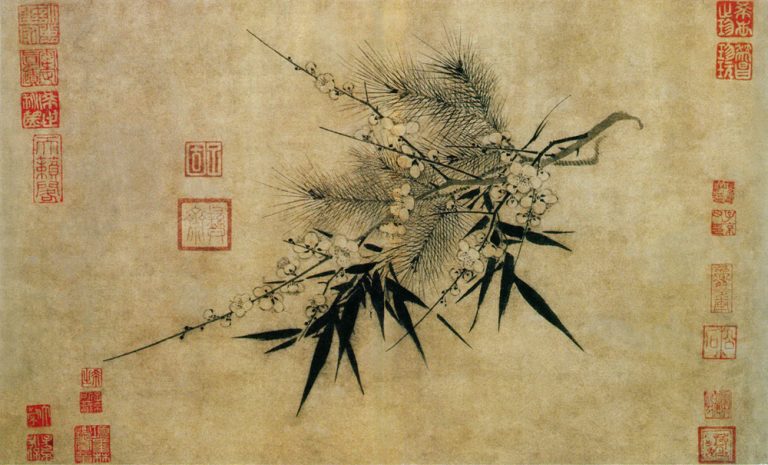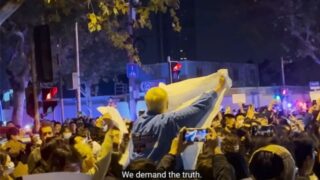“Il fumetto cinese” by Martina Caschera tells a fascinating and largely unknown story.
by Massimo Introvigne


There are several hundred scholarly books on Japanese comics (manga) and not a few on their Korean version (manhwa), but only a few on their Chinese counterparts (manhua). Three relevant sources are Andreas Seifert’s “Bildergeschichten für Chinas Massen. Comic und Comicproduktion im 20. Jahrhundert” (Köln: Böhlau Verlag, 2008); John A. Lent’s “Comics Art in China” (Jackson: University Press of Mississippi, 2017); and John Crespi’s “Manhua Modernity: Chinese Culture and the Pictorial Turn” (Berkeley: University of California Press, 2020).
We now have, however, the most complete treatment of the subject, “Il fumetto cinese. Introduzione ai manhua e ai lianhuanhua,” by Italian scholar Martina Caschera (Latina: Tunué, 2023). It is alas in Italian, but I hope an English translation may be published soon.
The terminology in itself is an obstacle to studying Chinese comics and may be slightly confusing. As Caschera explains, “manhua” is now the most frequent term to indicate Chinese “comics,” but was originally used to indicate a single cartoon, not the sequential comics to which we are accustomed. These were called “lianhuan manhua” or “lianhuan tuha,” “sequential cartoons,” and then “lianhuanhua.” Today, “lianhuanhua” is often used to designate the “classic” Chinese comics, less influenced by Japanese and Korean models, which dominated the market until the early 1990s. To make things more complicated, Chinese comics heavily influenced by Japanese manga were once called “xinmanhua” (“new manhua,” a term less used today, while “xiaorenshu” (children’s books) can still be encountered to indicate products catering to children that are, in fact, comics. “Manhua” has now become a catch-all category for “Chinese comics” in general.
Scholars of comics like to find “pre-comics” and “proto-comics” before the 19th century. They would not be disappointed if they would look at China, where illustrated religious and non-religious stories with some resemblance to comics circulated since the Middle Ages. And before the 19th century China printed more books than the rest of the world, hence one can argue it produced the first “proto-comics” in print too.
When the Empire ended and the Republic started, Shanghai emerged as a hotbed of political and satirical magazines, with a flourishing of “manhua” in the old sense of single cartoons or vignettes, often satirizing political figures. Some magazines specialized in cartoons, and one was called—simply—“Manhua.” It is on this magazine that the first Chinese comic strips appeared, including “Wang Xiansheng,” created by Ye Qianyu (1937–1995) and devoted to the humorous misadventures of a family man who had come to the large city from the countryside.


The stories of Mr. Wang became immensely successful, were imitated by many, and, with others, marked the passage from the single cartoon to the comic strip or page (lianhuanhua). The characters in Mr. Wang’s stories talked through balloons, which made Ye’s work more similar to Western comics than those of the celebrated Zhu Runzhai (1890–1936). Zhu in the 1920s published more than thirty graphic adaptations of famous novels—but without balloons, and with a summary of the story placed above each image.
The two styles continued to coexist and fueled the booming success of the lianhuanhua in the 1930s and the 1940s. Among the avid readers of lianhuanhua, Caschera reports, was Chairman Mao himself. When he came to power, he declared the lianhuanhua a “revolutionary” form of art, less suspicious than the “feudal” traditional painting, noted that both children and adults read it with pleasure, and ordered the Chinese Communist Party to produce its own comics.


Caschera’s book is a treasure cove of information about Mao-era comics. Although intended for propaganda, they were often of good technical quality. Life for their creators was not easy, though. Censorship was always vigilant, and the publication of several series was stopped as it was found they were not revolutionary enough. Even Zhang Leping (1910–1992), a very loyal Communist and an extremely successful comic artist, was criticized because his main character, the little orphan Sanmao, did not have a clear “class consciousness.” Zhang accepted the criticism and patiently rewrote the Sanmao stories until they were good enough for the CCP. In fact, Sanmao continued to be published even after Mao’s death.
During the Cultural Revolution, the lianhuanhua did not disappear, but it had to be further politicized. Some believed that speech balloons were “Western,” and the comics were “Sinicized” by going back to texts placed above or below each image rather than inside them. Photo novels with revolutionary content also became popular. Some once popular comic artists were, however, denounced as bourgeois and persecuted.


When the Cultural Revolution ended in 1976, several of the persecuted comic artists were rehabilitated. Not all resumed work, but by the end of the decade some started producing comics criticizing the Cultural Revolution. The regime also encouraged a turn to science fiction comics, as a way of fueling an interest in science that was also believed to promote atheism and contain “superstition.”
With Deng Xiaoping’s “reform and opening up,” translation of foreign comics, primarily Japanese and Korean, was also allowed, although it should always pass the political control of the censors. One consequence was the decline of the Chinese lianhuanhua, because the imported comics were more to the taste of the younger generations. In Caschera’s words, Chinese comic artists started “running after” the Japanese and Korean models, producing new xinmanhua, soon simply called manhua.
Paradoxically, however, Chinese production was more targeted by censorship than the one imported from abroad, generating underground or alternative comics, sometimes published online only and occasionally of a quality that was noticed abroad. The number of translations of both classic and contemporary or underground Chinese comics in the West is growing, although not comparable to the international success of the Japanese manga or the Korean manhwa.
Caschera’s book is a comprehensive study, recommended for scholars of both comics and China. It left me with the impression, however, that the most fascinating era of China’s “comics,” no matter how we decide to call them, may well have been the early pre-Maoist one, of which almost nothing is available in languages other than Chinese.









